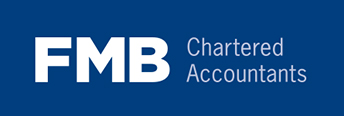Advertised rents for homes across the country rose by a further 1.7% between July and September, according to new data from the property listings website Daft.ie.
It was the 15th consecutive quarterly rise and brought the average monthly rent sought nationally to €1,955.
That represents an increase of 7.2% compared to the same time last year.
In the capital, the rate of increase has accelerated over the last few months, Daft said.
That has brought it back up closer to levels seen in other parts of the country, following a period where rent inflation in Dublin was lower than in other areas.
“This latest Rental Report confirms the signals that emerged three months ago that upward pressure is building once more in Dublin,” said Ronan Lyons, author of the report and associate professor in economics at Trinity College Dublin.
“During 2023, as Dublin experienced a significant pipeline of new rental homes, it enjoyed very little inflation in rents, as supply and demand were largely in balance. However, the upswing in construction of rental homes in Dublin is over,” he said.
“As the rate of building of rental homes continues to fall, Dublin is likely to resemble the rest of the country, where availability has been incredibly tight over the last three years, leading to dramatic increases in open-market rents,” he added.
Dublin rents sought were 5.2% up on a year ago, twice the rate of inflation seen at the end of 2023.
Across the remainder of the country, the rate of inflation is now 8.9%, down from 12.3%, Daft said.
A shortage of supply compared to the strong demand remains the key driver of prices, with the number of homes available to rent falling again after 18 months of improving availability.
At the start of this month, there were just over 2,400 homes available to rent across the country on the Daft platform, down 14% on the same date a year previously.
Properties to rent are, however, advertised on other platforms and some homes are rented without ever being advertised.
“When thinking about boosting housing supply, owner-occupied homes and social housing have dominated policymaker attention over the last few years,” said Mr Lyons.
“The new government will have to address the lack of supply of private rental housing early in its term, if it is to bring about a change in conditions similar to what Dublin enjoyed in 2023 but across all rental markets.”
The report shows that in Cork city average rents sought rose 10.4% to €2,077 while in Limerick city they were up 19.2% to €2,221 when compared to the same quarter last year.
However, these figures are based on new tenancies.
The Daft report shows that the rate of increase in rents for those remaining in a property is much lower, at 2.6% each year on average over the last decade, compared to 7.4% for those taking out a new tenancy.
Using Limerick as an example, Ronan Lyons told Morning Ireland there had been strong economic growth in the city but almost no new housing supply.
This means Limerick has gone from being a city that was significantly cheaper than other major cities to being roughly on par with Cork and Galway in terms of rent, Professor Lyons said.
He said social housing has been a big priority for the Government and major political parties but rental properties have not.
None of the parties are talking about how we get tens of thousands of new market rent homes in place around the country, he added.
Rent controls are good for existing tenants but bad for the sector as a whole, he added.
Article Source – Rents climb 1.7% between July and September – Daft – RTE






